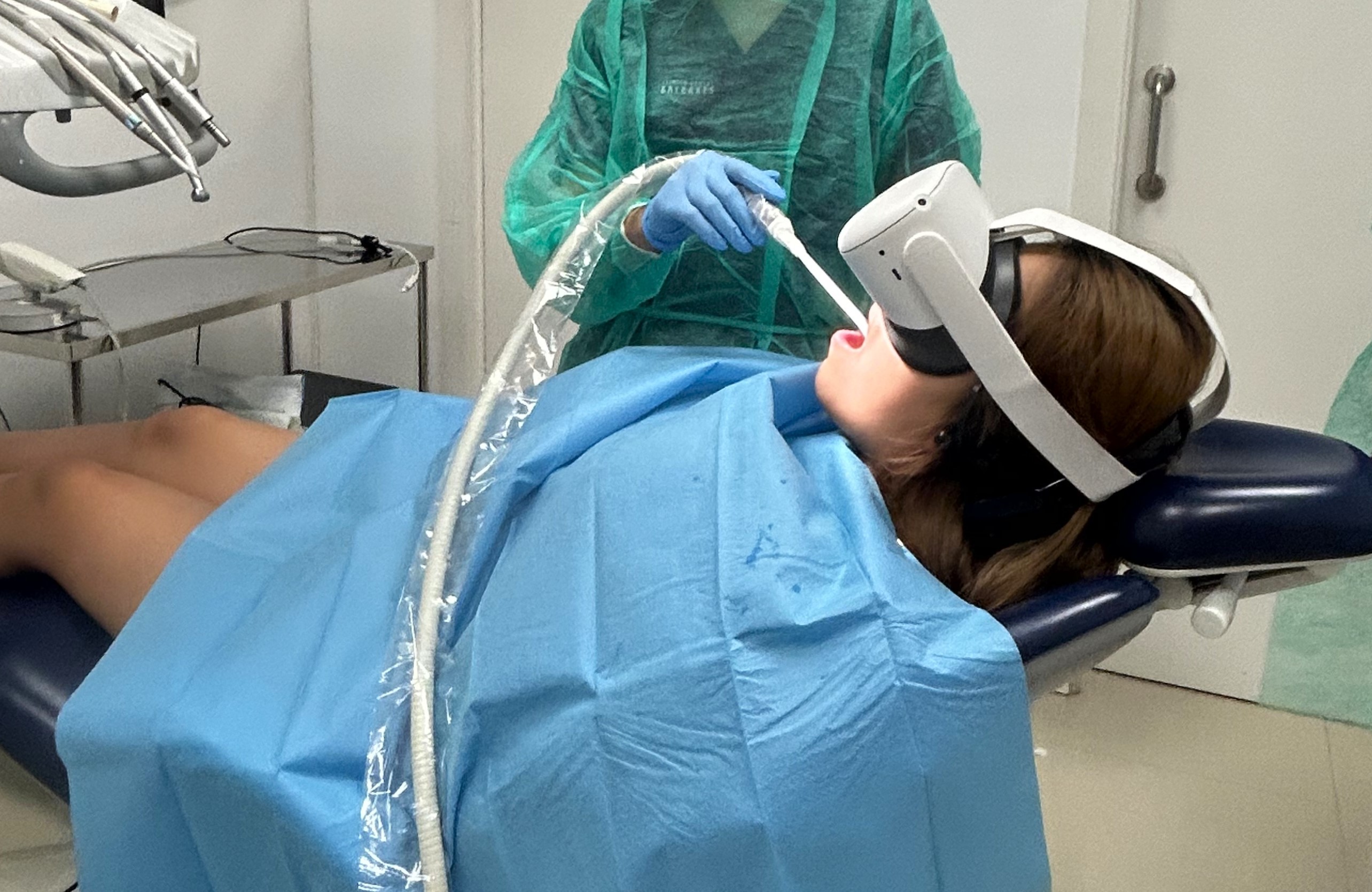
My Approach
In the rapidly evolving field of neuromarketing, my research sought to address a fundamental challenge in dentistry: enhancing the psychological well-being of patients undergoing invasive procedures. Leveraging advanced neuromarketing techniques, I conducted a study aimed at significantly reducing patient anxiety and elevating their overall experience through targeted sensory interventions during dental treatments. The investigation focused particularly on third molar extractions, a procedure notorious for inducing high levels of stress and discomfort.
Using a combination of Galvanic Skin Response (GSR) and Electroencephalography (EEG), I meticulously tracked patients' physiological reactions to olfactory, auditory, and visual stimuli throughout the different stages of the procedure. The ultimate goal was to create a dental environment that alleviated the psychological toll typically associated with such treatments, reducing the perception of pain and fostering greater patient satisfaction.
Vision and Innovation
The driving vision behind this research was the belief that patient care should transcend the physical aspects of treatment to encompass emotional and psychological well-being. Guided by this philosophy, the study incorporated neuromarketing-driven sensory stimuli—ranging from soothing aromas to immersive virtual reality visuals and calming auditory elements—into the clinical environment. These stimuli were designed not only to relax and distract patients but also to reduce their anxiety, leading to a lower perception of pain during the procedure.
While the combined sensory interventions yielded notable benefits in the early stages of treatment, particularly pre-anesthesia and anesthesia, their impact diminished as the procedures became more invasive, such as during tooth extraction. This highlighted the ongoing need for innovation in patient care, suggesting that sensory strategies must continue to evolve alongside traditional pain management techniques to maintain effectiveness across all phases of treatment.
Identifying Unique Challenges
One of the most significant challenges addressed in this research was managing the heightened anxiety patients often experience before and during dental procedures. Anxiety has been shown to amplify the perception of pain, diminishing the overall treatment experience. The study revealed that patients in the control group, who were not exposed to any sensory interventions, reported greater discomfort, particularly during anesthesia administration and tooth extraction. In contrast, patients who received sensory stimuli exhibited lower stress levels in the early stages, although this effect was less pronounced during the more invasive aspects of the procedure.
Resolving Complex Problems
To mitigate these challenges, the research introduced a multisensory approach that blended olfactory, auditory, and visual stimuli to create a calming environment. Data demonstrated that these interventions helped regulate physiological stress responses, particularly during the initial stages of treatment. While the stimuli could not fully alleviate the perception of pain during the most invasive phases, they contributed to an overall more positive patient experience. Importantly, patients exposed to these interventions reported higher satisfaction levels, even when their perceived pain remained significant.
User-Centric Design
Patient comfort was at the heart of this study. By integrating elements like soothing aromas and immersive virtual reality visuals, the research aimed to create a more comfortable, less intimidating dental experience. These stimuli successfully diverted patients' attention from the clinical environment, helping them focus on calming inputs rather than the stress of the procedure itself. This approach was particularly effective in reducing anxiety and promoting relaxation during critical moments, making the overall treatment experience more tolerable and positive.
Detailed Pages and Features
Stimulus Design and Patient Experience: The project introduced a strategic design of stimuli that significantly impacted patient experience. Olfactory stimuli, like orange blossom aromas, were introduced before anesthesia to create a calming environment. Visual stimuli, such as virtual reality paired with relaxing videos, immersed patients in a different reality, diverting their attention from the dental procedure. Auditory stimuli included therapeutic music, contributing to an overall reduction of perceived stress. Each of these elements was carefully selected based on neuromarketing principles to engage specific sensory pathways, aiming to reduce anxiety and enhance the overall dental experience.
Pre-Anesthesia Phase: Orange blossom aromatherapy successfully lowered emotional activation by 4%, allowing patients to feel more at ease before the procedure began.
During Anesthesia: Visual stimuli through virtual reality and relaxing videos led to a 16.4% reduction in stress and a 19% increase in brain activity associated with relaxation.
Post-Anesthesia and Extraction: Auditory stimuli resulted in minimal change in emotional activation, signaling an opportunity for further exploration into more effective auditory techniques in dental settings.
Comparative Analysis: Data from patients exposed to these multisensory interventions were compared to a control group without stimuli. The results indicated substantial improvements in the patient experience during less invasive phases but highlighted challenges during more intense procedural moments. This provided valuable insights into how different stimuli impact various stages of a procedure, shaping future interventions.
Accessibility and Optimization
Ensuring the comfort and safety of all patients was a core focus of the project. The sensory interventions, such as VR and music therapy, were designed to be adaptable across different demographics, with the potential to cater to diverse patient needs, including those with specific sensory sensitivities. The data collection tools, GSR and EEG, were seamlessly integrated into the dental environment without interfering with patient comfort or the clinical workflow.
The project's methods are adaptable to other healthcare settings, making the findings not only applicable in dentistry but also in broader medical fields. This flexibility optimizes the neuromarketing approach for maximum impact and accessibility, setting the stage for future developments in healthcare-focused sensory interventions.
Contributing to the Field
This study not only generated pivotal insights for revolutionizing patient care in dentistry but also unlocked significant opportunities for broader applications across the healthcare sector. By showcasing the effectiveness of neuromarketing principles in medical treatments, this research stands as a cornerstone for advancing both dental practices and healthcare at large. The findings demonstrate that targeted sensory interventions—such as olfactory, visual, and auditory stimuli—can be successfully adapted to various medical contexts, particularly where managing patient anxiety and psychological pain is essential.
The success of this study sets the stage for further exploration into how neuromarketing can elevate patient experiences in high-stress medical environments, offering a promising framework for treatments that require not only clinical precision but also emotional and psychological care. This research positions neuromarketing as a transformative tool in healthcare, expanding its relevance far beyond dentistry and fostering new possibilities for innovation in patient-centered medical practices.
Conclusion
This research project marked a significant contribution to the field of neuromarketing within healthcare, particularly in dentistry. By focusing on sensory stimuli to manage psychological pain and anxiety, the study demonstrated a measurable improvement in patient satisfaction and emotional regulation. The combination of olfactory, visual, and auditory interventions created a more holistic approach to patient care, reducing anxiety and enhancing the overall experience during dental treatments.
The findings of this project have opened new avenues for applying neuromarketing strategies across various healthcare settings, particularly in environments where patient anxiety and discomfort are prevalent. The success of the project lays the groundwork for future studies aimed at optimizing sensory interventions for different medical procedures, offering new ways to enhance patient care and treatment outcomes.
Ultimately, this project highlights the transformative power of neuromarketing to reimagine patient experiences, not only within dentistry but also across healthcare, setting a new standard for compassionate, patient-centered care. The methodology and insights developed here serve as a blueprint for future innovations, ensuring that patients’ psychological comfort is as prioritized as their physical health.
